GwinnettForum | Number 20.45 | June 26, 2020
SIGNIFICANT RECOGNITION: Gwinnett’s Board of Education is honoring former Chief Operating Officer Jim Steele by naming the district’s Facilities, Maintenance and Operations Complex in Lawrenceville for him. This is an artist’s rendering of what the sign at the Center will look like. Mr. Steele began his 36-year career with GCPS in 1976 and retired in 2012. He was in charge of building 97 new schools along with numerous building additions and renovations to existing schools. During his tenure, he built more schools than anyone in the United States.
 TODAY’S FOCUS: County, Three CIDs Team Up for First BRT Study in Gwinnett
TODAY’S FOCUS: County, Three CIDs Team Up for First BRT Study in Gwinnett
EEB PERSPECTIVE: If Statues Should Come Down, It Should Be by Petition, Not Mob Rule
ANOTHER VIEW: Pleased To See Younger Protesters Standing Up for Beliefs
SPOTLIGHT: Howard Brothers
FEEDBACK: Recognizes the Importance of Mass Transit for Gwinnett County
UPCOMING: County Adds 11 Other Location for Pick Up of Summer Meals
NOTABLE: Walton EMC Has Annual Meeting—with Members in Vehicles
RECOMMENDED: What the Lady Wants by Renee Rosen
GEORGIA TIDBIT: The Navy’s Last US Savannah Was DeActivated in 1947
MYSTERY PHOTO: What Do You Suppose These Guys Are Talking About?
LAGNIAPPE: Roving Photographer Frank Sharp Has Exhibit at Grayson Library
County, three CIDs team up for first BRT study in Gwinnett
By Heather Sawyer
LAWRENCEVILLE, Ga. | To accommodate current mobility needs and anticipated growth in the coming decades, Gwinnett County, in partnership with the Gateway85, Gwinnett Place and Sugarloaf Community Improvement Districts and the Atlanta Regional Commission, is embarking on an integrated land use and transportation plan for its first proposed Bus Rapid Transit (BRT) corridor.
The study will evaluate potential station locations, record stated preferences for surrounding development/redevelopment, and provide recommendations to make this vision a reality. These recommendations will be determined through technical analysis as well as by input from the community.
To support public engagement in the time of social distancing, the project team has created an interactive project website, www.GwinnettBRT.com, which features information about the study as well as two initial ways for visitors to provide input.
There is a survey component where participants rank five guiding principles for the study in order of importance to them. The survey also divides the study area into six subareas and uses images for participants to vote on the type and scale of development they would like to see in each subarea. The second way to provide input is through the “Map It!” activity, which enables participants to drop a pin in the study area to note the areas/things they would like to see change, or stay the same, in the future.
The Satellite Boulevard to Jimmy Carter Boulevard BRT Corridor Study is the first of its kind in the metro Atlanta region. Bus Rapid Transit is a transportation mode that does not currently exist in metro Atlanta, although there have been recent plans to introduce this mode in the region.
Gwinnett County Transportation Director Alan Chapman says: “We are excited to lead the region with this type of study and potential future implementation.”
Karen Winger, Gwinnett’s transit division director, added that the county has done technical analysis and high capacity transit planning for Gwinnett County as a whole. “We’re eager to start to take a closer look at how this all could shape up, especially along our corridor of highest transit ridership,” says Winger.
Bus Rapid Transit is similar to rail-based transit services but uses rubber-tired vehicles to provide greater service flexibility at a lower cost. Like rail, BRT provides high quality transit service to move a large number of people quickly and efficiently to and from their destinations. BRT can be much less costly to build and is up and running much faster than heavy and light rail service.
BRT operates in predominately, but not necessarily exclusively, dedicated right-of-way along with other treatments to increase overall speed and reliability of service. BRT right-of-way may include a dedicated transit-only corridor, transit-only lanes adjacent to mixed traffic lanes, or mixed traffic lanes. Typically, BRT is accessed at transit stations spaced every half to one mile with distinctive branding, off-board fare collection, real-time bus arrival information and enhanced waiting areas.
The project was a recommendation of previous planning efforts, including Connect Gwinnett: Transit Plan and the 2019 Transit Review Committee. These recommendations were reinforced through transit-supportive policies and land use recommendations in the 2040 Unified Plan. The project is the backbone of projects included in the list of Gwinnett County transit projects for The Atlanta-region Transit Link’s Regional Transit Plan.
- Have a comment? Send to: elliott@brack.net
If statues come down, it should be by petition, not mob rule
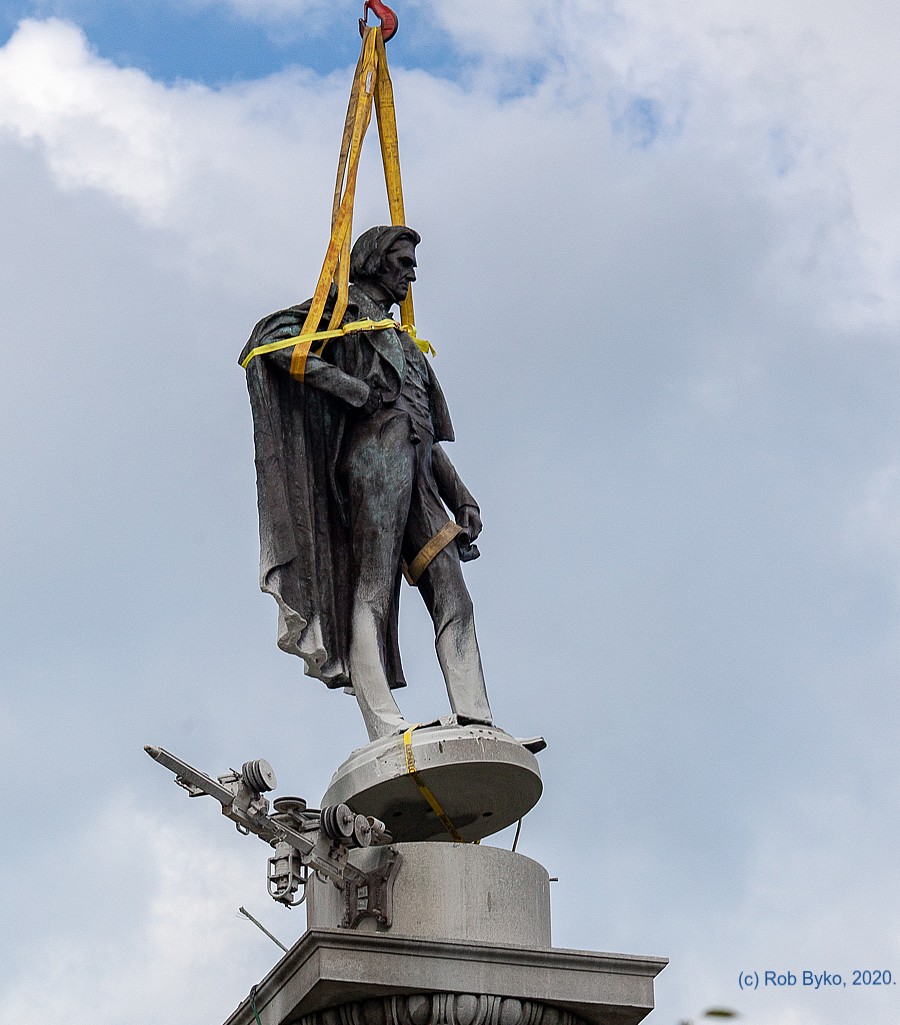
The statue of John C. Calhoun in Charleston, S.C., came down this week. Exclusive photo by Rob Byko.
By Elliott Brack
Editor and Publisher, GwinnettForum
JUNE 26, 2020 | Monuments, historical plaques and statues have been set up “in the heat of the moment” throughout the United States to honor individuals by people intent on recognizing the activities of what was seen as worthy individuals. But not all such recognitions are always deemed worthy several generations after the monument’s erection, when a more historical and more enlightened evaluation may be made of that honoree’s accomplishments.
 Placement of monuments or naming of bridges or intersections for individuals often happened years ago. It’s still happening today. You see signs as you travel around Georgia, as this road, this bridge, this statue recognizes individuals and their accomplishments. The naming is always considered worthy at the time. So, many such named recognitions and monuments do not stand the test of time. Some should never have been erected.
Placement of monuments or naming of bridges or intersections for individuals often happened years ago. It’s still happening today. You see signs as you travel around Georgia, as this road, this bridge, this statue recognizes individuals and their accomplishments. The naming is always considered worthy at the time. So, many such named recognitions and monuments do not stand the test of time. Some should never have been erected.
Up until recently, removing statuary was not forefront on the political agenda. There was no essential demand, method, pathway or demand to removing what may be now looked upon now as an unworthy recognition.
Yet the recent demands of what essentially are often peaceful protests should not be the method used to determine whether the statues should be taken down. After all, we are a nation of laws, not one directed by the action of an undisciplined mob, organized merely to disrupt long-standing honorees.
We were encouraged recently in DeKalb County, when a monument came down because of a court ruling, not pulled down by an angry mob. There were protests around the monument, but it was the legal ruling by a judge that initiated the removal of the statue.
That is as it should be.
We were also encouraged by the family of Confederate Gen. John B. Gordon, whose statue is on the state Capitol grounds, when the family itself recognizes Gordon’s questionable background. The family is to be commended for asking that the monument be removed.
If people think a monument or statue needs to be removed, for whatever reason, they should petition their local government to remove the offensive monument. However, undisciplined mobs should not dramatically pull down these statues. That’s not the American way, not the legal way. Several such petitions are circulating in Georgia now to remove racist statues. We commend such action. We must insist on legal governmental removal, not mob rule.
For the most part, every day people pass by many of these statues and monuments in the communities all across America, never thinking of them. Most were placed years ago, with people today unaware of who the monuments represent, or why.
On closer observation, we now recognize that all the statues so put up may not be considered worthy today. In the South, many of these statues were conceived at the turn of the Century, as the area emerged from the aftermath of the Civil War, and wanted to preserve a tradition that most of us do not consider worthy today.
At any rate, the removal of the statue may be today’s solution. But the statue itself if not the problem. It is a symptom, not the disease. If all the statues were destroyed, the underlying problem would still exist. It may take eons of time before the situation clears itself.
Meanwhile, the statues remain. Few think of them. Yet others are hurt by seeing a historical figure they feel unworthy honored with a monument. In they want action, they should turn to their civil government for redress and satisfaction.
- Have a comment? Send to: elliott@brack.net
Pleased to see younger protesters standing up for beliefs
By Jack Bernard, contributing columnist
“This is not a momentary civil disturbance. This is a serious and highly organized political movement. It is not superficial. It is deep and profound. It has vast ambitions. It is insidious; it will grow. Its goal is to end liberal democracy and challenge Western civilization itself…. The ideas that fuel it have incubated for decades on college campuses.” — Tucker Carlson of Fox News.
PEACHTREE CITY, Ga. | Even though we don’t agree very often, I agree with a portion of what Carlson says about the protesters objecting to Confederate monuments and police violence directed towards African Americans.
 College instructors have helped to awaken younger Americans to the need for true equality and change in our nation; it’s been over 150 years since the slaves were freed and African Americans and people of color are still discriminated against.
College instructors have helped to awaken younger Americans to the need for true equality and change in our nation; it’s been over 150 years since the slaves were freed and African Americans and people of color are still discriminated against.
However, I disagree with Carlson’s ridiculous, baseless assertion that the goal of this progressive movement is to kill our democracy and civilization. Quite the opposite, the Black Lives Matter movement and the progressives marching with them want us to live up to our vaunted ideals of equal justice for all.
Tucker Carlson is from La Jolla, Calif., one of the most affluent cities in the country. When I lived in La Jolla, my office in La Jolla looked out over the ocean where I could see the dolphins playing from my balcony. It’s not surprising that someone raised with that kind of privilege would not understand why the common people are upset.
But we Georgians should know better. There is a good reason people here are upset. Driving while black stops happen every day in Georgia; if you don’t believe it, ask someone black. This is racism.
Our governor pushes through legislation to prevent localities, many of which have majority black populations, from removing statues of Confederate leaders (pro-slavery traitors to the USA) from public grounds. These grounds are maintained by the tax money coming from people of all races, including blacks.
The Glynn County Police and legal establishment conspire to look the other way when a former cop murders an unarmed black jogger. I could go on, but you get the point.
I’m a senior, but I’m glad to see the younger generation standing up for what they believe and push for long overdue change. It’s past time for our nation to work stronger to finally become the true democracy that most of us envision and want it to be.
- Have a comment? Send to: elliott@brack.net
Howard Brothers
 Today’s sponsor is Howard Brothers, which has retail stores in Alpharetta, Doraville, Duluth, Oakwood and Athens. John and Doug Howard are the “brothers” in Howard Brothers. This family-owned business was started by their dad, and continues to specialize in hardware, outdoor power equipment and parts and service. Howard Brothers are authorized dealers of STIHL, Exmark, Honda, Echo outdoor power equipment and Benjamin Moore paint. Howard Brothers is also an authorized Big Green Egg, Traeger Grill and YETI Cooler dealer.
Today’s sponsor is Howard Brothers, which has retail stores in Alpharetta, Doraville, Duluth, Oakwood and Athens. John and Doug Howard are the “brothers” in Howard Brothers. This family-owned business was started by their dad, and continues to specialize in hardware, outdoor power equipment and parts and service. Howard Brothers are authorized dealers of STIHL, Exmark, Honda, Echo outdoor power equipment and Benjamin Moore paint. Howard Brothers is also an authorized Big Green Egg, Traeger Grill and YETI Cooler dealer.
- Visit their web site www.howardbrothers.com.
- For a list of other sponsors of this forum, click hereFor a list of other sponsors of this forum, click here.
Recognizes importance of mass transit for Gwinnett County
Editor, the Forum:
![]() Let me say that I totally agree with the importance and efficient practicality of mass transit.I travel MARTA to the airport, then fly to cities in our country, to Europe and Asia as a Delta pilot.
Let me say that I totally agree with the importance and efficient practicality of mass transit.I travel MARTA to the airport, then fly to cities in our country, to Europe and Asia as a Delta pilot.
Yes, parts of our the USA need to ramp-up rail. Of course in North Atlanta, many “No” votes come from skepticism over what they feel will be increased crime etc. from transient riders from other locales. This is an overblown concern, similar throwing the baby out with the bathwater.
Yes, more policing may be needed to prevent loitering etc. initially, as was the case when the MARTA Lenox Station opened years ago to greatly increased mall shoplifting. Over time though, the dust will settle and greater mobility for all will be a huge positive economically and socially.
Thanks for the well-researched article.
— Greg Baughman, Peachtree Corners
Comparing county to world’s busiest cities was wrong way
Editor, the Forum:
While I may not agree with your opinions, I usually can see how you reach your conclusions.
Your recent article promoting mass transit in Gwinnett makes several false analogies between Gwinnett and other cities with mass transit. To say you compared apples to oranges is an understatement.
Right out of the gate: Gwinnett, a suburban county in Metropolitan Atlanta, is compared with the rest of the world’s large cities, with regard to mass transit. Then later: Gwinnett is compared with 211 cities that have mass transit or it is under construction. And finally: it compares Gwinnett with cities in China and India, countries with much greater population-density than the US.
Even with an estimated 2040 population of 1.5 million, Gwinnett’s population density will be close to 3,500 persons/square mile, which is less than half of the 7,800 persons per square mile that is an widely quoted baseline for financially supporting mass transit with ridership. (http://courses.washington.edu/gmforum/Readings/Bertaud.pdf ) When that was written in the early 2000s, they had Atlanta at 1,500 persons per square mile.
Here is a graph that shows the rest of the world’s large cities in density:
— Tom Fort, Sneilville
Dear Tom: The best news for Gwinnett is that it doesn’t have to build an entirely new mass transit system, but can tie into MARTA at a much lower cost. While we may not have the density of some larger areas, we still need traffic relief, and mass transit is the best direction to go.–eeb
Ellen Gerstein is a champion for Gwinnett’s most vulnerable
Editor, the Forum:
Ellen Gerstein is a Gwinnett County treasure. I’ve had the privilege of knowing and working alongside Ellen for 24 years. I met her when I started working for the late Barbara King. Over the years we worked together on many community projects and Ellen has always been my “go- to” person for anything Gwinnett County. Beyond a working relationship, we are close friends!
Ellen, thank you for being the champion for Gwinnett County’s most vulnerable people. You advocated for them and you educated the rest of us.
Thank you for laying the foundation for so many health and human services initiatives started by the Gwinnett Coalition. These initiatives will carry on, helping thousands of people who are in need. That’s your legacy.
Happy Retirement, dear friend. You deserve all the happiness in the world. We’ll celebrate sometime in the near future.
— Ann Souter, vice president, The Primerica Foundation, Duluth
Send us your thoughts: We encourage you to send us your letters and thoughts on issues raised in GwinnettForum. Please limit comments to 300 words. We reserve the right to edit for clarity and length. Send feedback and letters to: elliott@brack.net
County adds 11 more locations for pick up of summer meals
Starting Wednesday, Gwinnett County’s Summer Meals Program will expand to 11 more locations for free grab-and-go breakfasts and lunches for children 18 years old and younger. The program allows parents, caregivers or community groups to pick up nutritious meals for children to take home, or children can pick up their own meals. Registration is not required.
In addition, the Five Forks Branch Libraryat 2780 Five Forks-Trickum Road in Lawrenceville will serve meals as part of the program starting Monday, July 6.
Emergency meal kits and information is also made available at each of the summer meals sites for residents ages 60 and older who need assistance with hunger, health or mobility issues.
- For more information about summer meals or a list of all the sites, visit GwinnettSummerMeals.com or call 770-822-8840. Residents who would like to volunteer to assist with distribution of the Summer Meals Program can apply here.
Meals can now be picked up between 11 a.m. and 1 p.m. while supplies last at:
- Alexander Park, 800 Old Snellville Highway, Lawrenceville
- Bogan Park, 2723 North Bogan Road, Buford
- Collins Hill Park, 2225 Collins Hill Road, Lawrenceville
- Dacula Park Activity Building, 2735 Auburn Avenue, Dacula
- E. E. Robinson Park, 885 Level Creek Road, Sugar Hill
- George Pierce Park, 55 Buford Highway, Suwanee
- Harbins Park, 2995 Luke Edwards Road, Dacula
- Mountain Park Activity Building, 1063 Rockbridge Road, Stone Mountain
- OneStop Buford, 2755 Sawnee Avenue, Buford
- Peachtree Ridge Park, 3170 Suwanee Creek Road, Suwanee
- South Gwinnett Park, 2115 McGee Road, Snellville
Walton EMC has annual meeting — with members in vehicles
We’re all familiar with drive-through restaurants, drive-through banks and drive-through pharmacies. Las Vegas even has a drive-through wedding chapel. Now Walton Electric Membership Corporation (EMC) can add its Annual Meeting to the list of drive-throughs.
Out of concern for the health and well-being of the cooperative’s customer-owners, Walton EMC’s board of directors voted to modify the 2020 event and take care of necessary business by allowing customer-owners to participate from the safety of their vehicles.
On Saturday, June 20, more than 1,500 participants – a number typical of a regular year – did just that—attended the Walton EMC Annual Meeting in their automobiles. Walton EMC Consumer Services Director Sherry Horvieth electronically registers one of the customer-owners. In addition to voting for directors and approving the minutes of last year’s meeting, those driving to the headquarters office received the traditional bucket of gifts.
Directors re-elected without opposition included Farmington District Director Michael Lowder and Good Hope District Director Tommy Adcock. Incumbent Centerville-South Snellville Director Dan Chelko was also re-elected after facing a challenge from Ken Rempe.
Three PCOM students appointed to national board positions
Three PCOM Georgia students have recently been appointed to national board positions in their respective professional societies.
Kala Hurst (DO ’22) of Tuscaloosa, Ala. was appointed to the position of Student National Medical Association Region IV director. In this position, she will oversee chapters in the states of Alabama, Georgia, Florida, North Carolina, South Carolina and at Caribbean Schools.
Aldwin Soumare (DO ’22) of Bronx, New York, was appointed to the position of National Osteopathic Affairs Committee co-chairperson. In this position, he will represent, support and encourage osteopathic medical students across the country through leadership, engagement and responsibility. He said he is “elated to provide ways for osteopathic medical students to have their voices heard and represented on a grander scale. This opportunity will create avenues for many students to be mentored, receive funding for SNMA-related events, and cultivate their development as future osteopathic practitioners.”
Fourth year PCOM School of Pharmacy student Jeffrey Clark (PharmD ’21), from Kennesaw, Ga., has recently been named the chair of the American Society of Health-System Pharmacists Pharmacy Student Forum Executive Committee for the 2020-2021 term. Clark said his goal for this year is to increase awareness of the forum and contribute to the overall advancement of the pharmacy profession.
What the Lady Wants by Renee Rosen
![]() From Karen Harris, Stone Mountain: This book begins with the 1871 Great Fire of Chicago. In two days, the lives of both the elite and the working class are devastated and must be rebuilt from scratch. It is Marshall Field who leads the charge by first rebuilding his store. When he meets Delia Spence, a romance slowly builds which upends the protocols of the monied community. It begins with friendship that burgeons into a love affair in part because of the misery both Marshall and Delia experience in their own marriages. In the backdrop is the 30 year growth of the city of Chicago from what is believed to be a dangerous, untamed place to a jewel in the crown of the Midwest. The reader will laugh, cry and experience frustration with the motivations and actions of the characters. The result is a deeply satisfying read that may encourage reading more of Rosen’s works.
From Karen Harris, Stone Mountain: This book begins with the 1871 Great Fire of Chicago. In two days, the lives of both the elite and the working class are devastated and must be rebuilt from scratch. It is Marshall Field who leads the charge by first rebuilding his store. When he meets Delia Spence, a romance slowly builds which upends the protocols of the monied community. It begins with friendship that burgeons into a love affair in part because of the misery both Marshall and Delia experience in their own marriages. In the backdrop is the 30 year growth of the city of Chicago from what is believed to be a dangerous, untamed place to a jewel in the crown of the Midwest. The reader will laugh, cry and experience frustration with the motivations and actions of the characters. The result is a deeply satisfying read that may encourage reading more of Rosen’s works.
An invittion: what b ooks, restaurants, movies or web sites have you enjoyed recently? Send us your recent selection, along with a short paragraph (150 words) as to why you liked this, plus what you plan to visit or read next. Send to: elliott@brack.net
The Navy’s last USS Savannah was deactivated in 1947
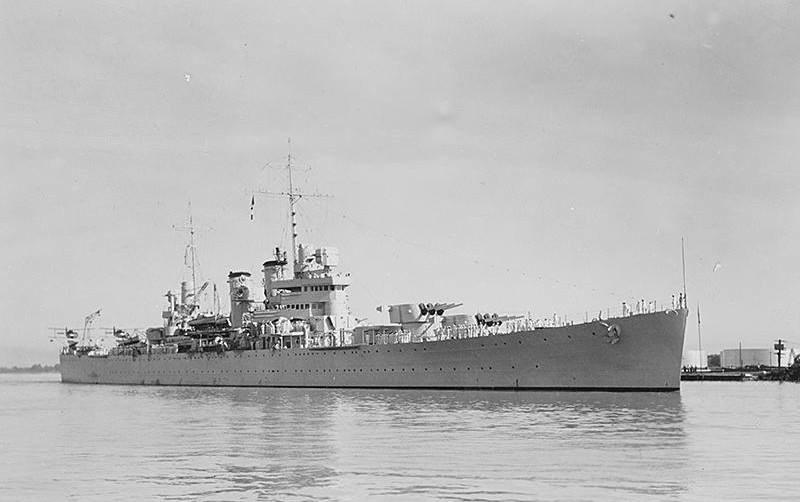
The fourth USS Savannah (CL-42) engaged in Atlantic and Meditteranean operations during World War II (1941-45), most notably Operation Torch, the allied invasion of North Africa.
(Continued from previous issue)
USS Savannah (AS-8), 1917-1934
The third USS Savannah was built in 1899. Originally a German commercial freighter named the SS Saxonia, the ship was seized by the U.S. Navy in Seattle, Wash., at the outbreak of the World War I(1917-18). When the United States entered the war, the ship was converted to a submarine tender and renamed Savannah. It then sailed the Eastern Seaboard alongside the submarines N-1, N-2, and N-3, patrolling waters that were well-removed from the hostilities overseas.
After the war, the Savannah participated in routine patrol missions along the Atlantic, Pacific, and Hawaiian coasts while also taking an active role in torpedo testing for the navy. The third Savannah lost its name in 1933, when the same name was assigned to CL-42, a new light cruiser battleship. The third Savannah was then known as the AS-8 until 1934, when it was sold to a merchant shipping company and later renamed the Orbis.
USS Savannah (CL-42), 1937-1947
The fourth USS Savannah (CL-42) was a light cruiser that engaged in Atlantic and Mediterranean operations during World War II (1941-45). Constructed in New Jersey between 1934 and 1937, the ship completed multiple patrol trips during the late 1930s, including a visit to the Port of Savannah in 1939. It relocated to Pearl Harbor for training in 1940 and then conducted neutrality patrols off the coast of Cuba and along the Eastern Seaboard until Pearl Harbor was attacked on December 7, 1941.
Nearly a year later, the Savannah participated in its most notable effort, Operation Torch, the allied invasion of North Africa. On November 8, 1942, the cruiser opened fire on the Vichy-held Port Lyautey in Morocco in order to provide support for invading troops. The ship’s scout planes then introduced a devastating new tactic in warfare, dropping depth charges from a considerable height directly onto enemy lines. This multi-pronged barrage continued until November 11, when hostilities ended. Soon afterward, the Savannah returned to Norfolk, Virginia.
The Savannah took on many roles throughout the rest of the war, including patrols along the coast of Brazil to destroy Nazi blockade-runners, participation in the Allied invasion of Sicily and Salerno, and as part of the convoy that carried President Franklin D. Roosevelt to the Yalta Conference in Crimea. Finally, the Savannah participated in Operation Magic Carpet, the massive endeavor to bring American troops home from Europe at war’s end. The ship was officially deactivated in 1947 and was sold for scrap metal in 1966.
- To view the Georgia Encyclopedia article online, go to http://georgiaencyclopedia.org
You have to wonder what these two guys are talking about
Every now and then, a great story pops up. This is one of them. So there’s two guys talking, with a church in the background. Tell us what you think all this means as your identify today’s Mystery Photo. Tell us where it’s located by sending to elliott@brack.net, including your hometown.
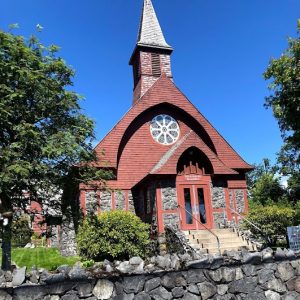 Some of you may have been to the recent Mystery Photo. It came from Mickey Merkel of Berkeley Lake. George Graf of Palmyra, Va. was first in identifying St. Peter’s by-the-Sea Episcopal Church, Sitka, Alaska. He writes: “After four years of worshiping in the Presbyterian Chapel, Episcopalians finally had their own church in 1899, with the construction of St. Peters-by-the-Sea. Complete with stained glass windows, modified flying buttresses, and wooden pews, this small chapel is open to the public 24/7. The church and the adjacent See House (1905) are both on the National Register of Historical Places, and are largely the work of Bishop Peter Trimble Rowe. Rowe, who helped organize and fundraise the construction, also built the stone wall around the church and the See House. It was one of his many endeavors, which included serving churches throughout the state, traveling by dogsled and canoe to remote communities. Although he spent little more than a decade living in Sitka, he’s buried on the site, along with his wife and two children.”
Some of you may have been to the recent Mystery Photo. It came from Mickey Merkel of Berkeley Lake. George Graf of Palmyra, Va. was first in identifying St. Peter’s by-the-Sea Episcopal Church, Sitka, Alaska. He writes: “After four years of worshiping in the Presbyterian Chapel, Episcopalians finally had their own church in 1899, with the construction of St. Peters-by-the-Sea. Complete with stained glass windows, modified flying buttresses, and wooden pews, this small chapel is open to the public 24/7. The church and the adjacent See House (1905) are both on the National Register of Historical Places, and are largely the work of Bishop Peter Trimble Rowe. Rowe, who helped organize and fundraise the construction, also built the stone wall around the church and the See House. It was one of his many endeavors, which included serving churches throughout the state, traveling by dogsled and canoe to remote communities. Although he spent little more than a decade living in Sitka, he’s buried on the site, along with his wife and two children.”
Lou Camerio, Lilburn, and Susan McBrayer of Sugar Hill, also recognized the photo.
Allen Peel of San Antonio, Tex. writes: “If you look at the mystery photo closely, you may notice an unusual feature of the stained-glass “rose” window. it has a Star of David at its center. A number of stories have surfaced about how this feature ended up as a central feature of a Christian-based church. The most popular legend is that the founder of St. Peter’s, Bishop Peter Trimble Rowe (1856-1942), and his congregation wanted to include a rose window in the construction of the church’s sanctuary. So they placed an order back East and waited many months for it to be delivered. When the window finally arrived, they found that instead of the Christian cross that was ordered for the focal point, there was a six-pointed Star of David. Considering the time it took to produce and the difficulty of the window’s dimensions, the congregation decided to keep it. As they say on their website: ‘For close to 100 years, this Star has reminded the worshippers of St. Peter’s of the beginnings of our Christian faith.’”
HAPPY 50th ANNIVERSARY: Marking 50 years of marriage on Saturday, June 27, will be Dee and Lou Camerio of Lilburn, shown at their wedding
NOW HANGING IN the Grayson Branch of the Gwinnett County Public Library are 18 photographs from around the world by GwinnettForum Roving Photographer Frank Sharp. One of the images is of the Opera House in Sydney, Australia. The photos will be on display through July 30. New hours of the library system, now back open, are from 10 a.m. until 5 p.m. Monday through Saturday; and from noon until 5 p.m. on Sunday. Library director Charles Pace says: “We won’t restore full hours until we feel it is reasonably safe to have more people in the buildings.”
GwinnettForum is provided to you at no charge every Tuesday and Friday.
Meet our team
- Editor and publisher: Elliott Brack, 770-840-1003
- Managing editor: Betsy Brack
- Roving photographer: Frank Sharp
- Contributing columnist: Jack Bernard
- Contributing columnist: Debra Houston
- Contributing columnist: George Wilson
More
- Location: We are located in Suite 225, 40 Technology Park, Peachtree Corners, Ga. 30092.
- Work with us: If you would like to serve as an underwriter, click here to learn more.
Subscriptions to GwinnettForum are free.
- Click to subscribe.
- Unsubscribe. We hope you’ll keep receiving the great news and information from GwinnettForum, but if you need to unsubscribe, go to this page and unsubscribe in the appropriate box.
© 2020, Gwinnett Forum.com. Gwinnett Forum is an online community commentary for exploring pragmatic and sensible social, political and economic approaches to improve life in Gwinnett County, Ga. USA.



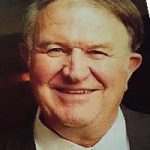
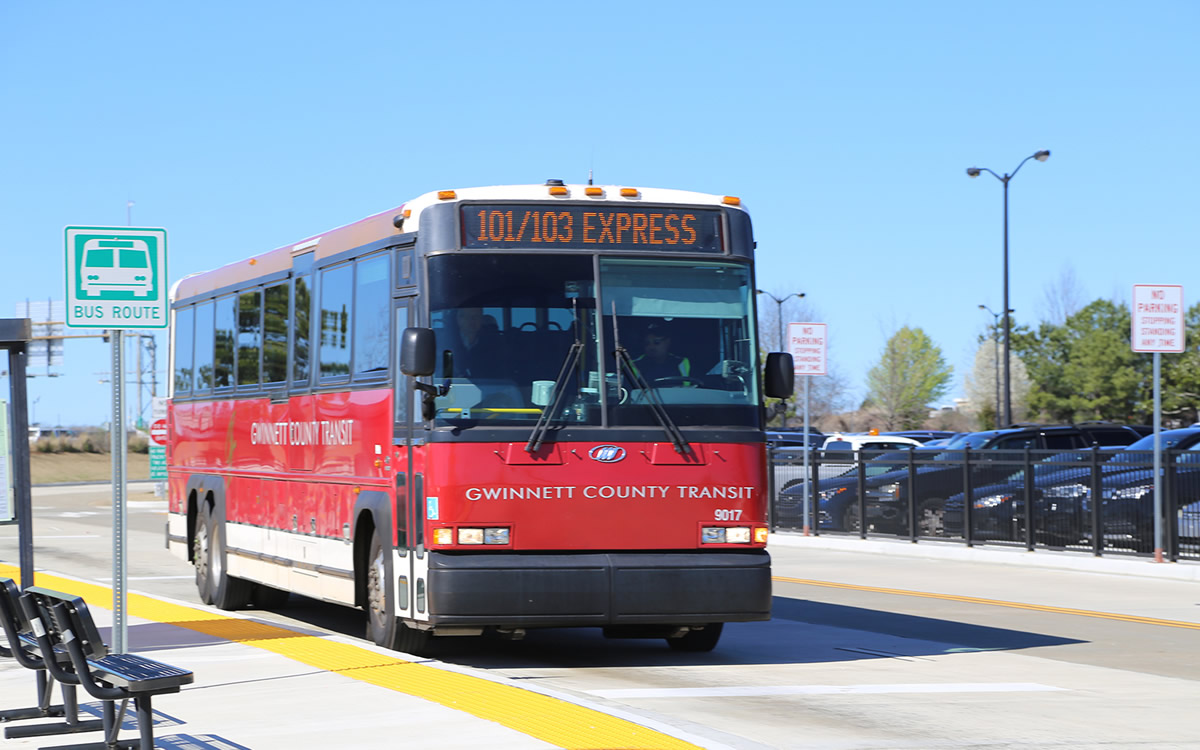
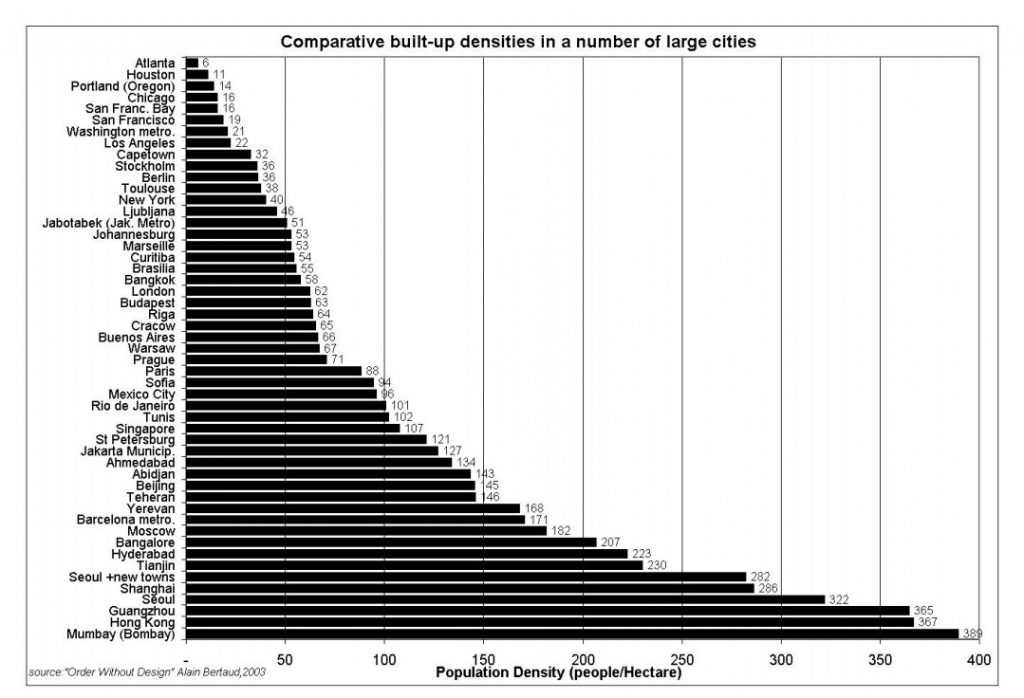
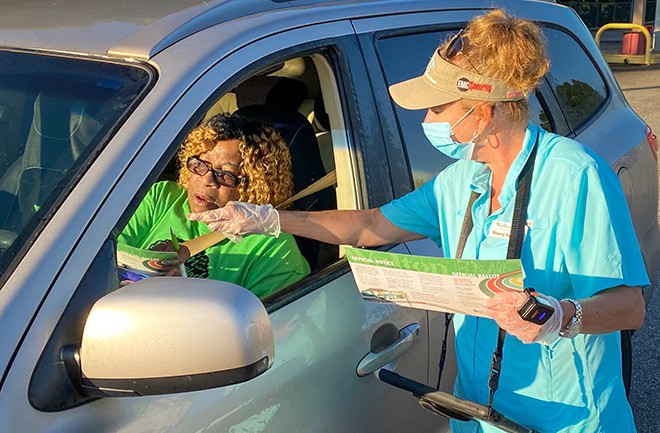



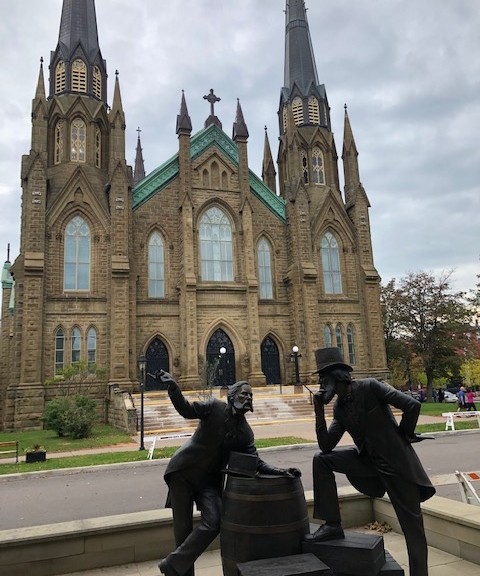









Follow Us